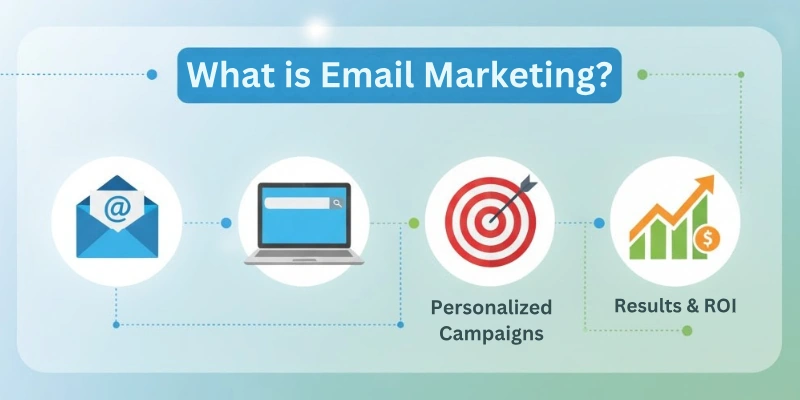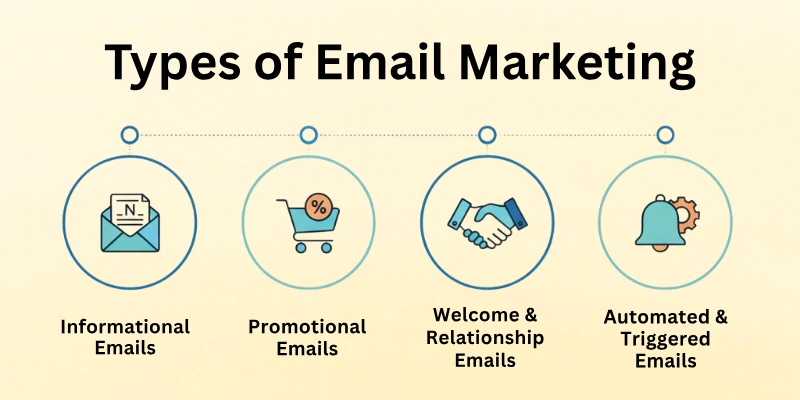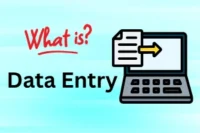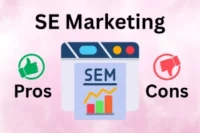What is Email Marketing & How to Do It Right
Published: 19 Oct 2025
Did you know that over 4 billion people use email worldwide? That’s a huge number, right? This massive reach is why email marketing is so powerful. But you might be wondering, what is email marketing? What are its main components? How did email marketing get started?
If you’re curious to learn about these things, just dig in next!
What is Email Marketing?
Email marketing is a way of promoting products or services using emails. It’s a digital marketing strategy where businesses send emails to customers or potential customers.

How Email Marketing Works
Here’s how it works: Imagine a clothing store wants to tell people about a big sale. They create an email with all the sale details, like discounts and new arrivals. Then, they send this email to everyone on their email list. People who get the email might visit the store and buy something.
Email marketing helps businesses stay connected with their audience, promote sales, and share important updates.
History of Email Marketing
In the beginning, email was created as a way for people to send messages to each other over the internet. It started in the 1970s when a man named Ray Tomlinson sent the first email. Email quickly became a popular way for people to communicate.
Evolution of Email Marketing
As more people started using email, businesses saw a chance to reach their customers directly. In the 1990s, email marketing began to grow. Companies started sending emails to promote their products and services.
Key Milestones in Email Marketing
- 1990s: Businesses began sending mass emails to many people at once.
- 2000s: Email marketing became more personalized, with emails tailored to each customer.
- 2010s: Advanced tools allowed businesses to track email performance and improve their strategies.
Examples of Early Email Marketing Campaigns
One of the first email marketing campaigns was in 1978 when a company sent out an email to promote its computers. This campaign led to $13 million in sales, showing the power of email marketing.
Components of Email Marketing
There are three major parts of email marketing:
- Email List
- Email Campaigns
- Email Templates
Now what do they mean? What do they include? To cover this, let’s move forward.
Email List
An email list is a collection of email addresses belonging to people who have agreed to receive messages from a business or organization. It’s like having a group of friends who want to hear from you. Building an email list is important because it allows businesses to connect directly with their audience.
Strategies for Growing an Email List
- Businesses use different strategies to grow their email lists, such as offering discounts or free content in exchange for email sign-ups.
- They may also use website pop-ups, social media promotions, or contests to attract more subscribers.
Email Campaigns
Email campaigns are like organized events where businesses send a series of emails to their subscribers. There are different types of email campaigns:
- Newsletters: Regular updates with news, articles, or tips.
- Promotional Emails: Special offers, discounts, or product announcements.
- Transactional Emails: Confirmations, receipts, or order updates.
Each type serves a specific purpose in engaging and informing subscribers.
Email Templates
Email templates are like blueprints for emails. They provide a structure and design that businesses can use to create consistent and attractive emails. Good email design is important because it makes emails easy to read and visually appealing to subscribers.
Examples of Effective Email Templates
An effective email template might include a clear headline, engaging images, and a call-to-action button that prompts subscribers to take action, like “Shop Now” or “Learn More”.
Types of Email Marketing
So, friends, there are different types of email marketing. Not all emails are just for promotions; each email can have a different purpose. Here are some types of emails and their purposes:

- Welcome Emails: Greet new subscribers and introduce your brand.
- Newsletter Emails: Share updates, news, and valuable content regularly.
- Promotional Emails: Announce sales, discounts, and special offers.
- Transactional Emails: Confirm purchases, orders, and shipping details.
- Re-engagement Emails: Reach out to inactive subscribers to bring them back.
- Survey Emails: Collect feedback and opinions from your audience.
- Event Invitation Emails: Invite people to webinars, workshops, or events.
To learn more about each type, click here.
Benefits of Email Marketing
Here are some major advantages of using email marketing:
Cost-Effective
Email marketing is a cost-effective way for businesses to reach their customers compared to other marketing channels like TV ads or printed flyers. It saves money because businesses don’t have to pay for printing or postage.
Direct Communication
Email marketing allows businesses to talk directly to their customers. They can send personalized messages that feel like a one-on-one conversation. This helps build trust and loyalty.
Measurable Results
With email marketing, businesses can measure how well their emails are doing. They look at things like:
- Open Rates: How many people open the email.
- Click-Through Rates: How many people click on links inside the email.
- Conversion Rates: How many people take action, like buying something.
These numbers help businesses understand what works and what doesn’t.
Customer Engagement
Emails can keep customers interested and connected. Businesses can share helpful tips, news about products, or even new articles updates. This builds a relationship that keeps customers coming back.
Increased Sales
When done right, email marketing can lead to more sales. For example, a clothing store might send an email about a big sale. Customers who get the email might visit the store and most chances are that customer will convert into qualified lead as well.
Tools and Platforms for Email Marketing
You guys are aware of the power of email marketing up until now!
But how do you send those emails to hundreds or even thousands of people? That’s where email marketing software comes in.
Email Marketing Software
There are several popular email marketing tools like Mailchimp, Constant Contact, and Sendinblue. These tools help businesses create and send emails to their customers. They provide templates for designing emails, manage email lists, and show how well emails perform.
Features to Look For in an Email Marketing Platform
When choosing an email marketing platform, businesses should look for features like:
- Easy-to-use email builders for making attractive emails.
- Tools to send emails automatically based on what customers do.
- Tools to see how well emails work, like how many people open them or click on links.
- These features help businesses save time and make their email campaigns work better.
Integrations
Imagine having all your customer data in one place!
Many email marketing platforms integrate with other marketing and CRM (Customer Relationship Management) tools. This lets you:
- Sync your contact lists: Avoid duplicate entries and keep your data up-to-date.
- Personalize your emails: Use customer data from your CRM to send more relevant and engaging emails.
- Track customer journeys: See how your email campaigns fit into the overall customer experience.
By using these integrations, you create a powerful system for building relationships and growing your business through email marketing.
Best Practices for Email Marketing
Email marketing is effective when done right. Here are some best practices to help businesses make the most of their email campaigns.
Personalization
Personalizing emails makes customers feel special. Techniques include using their name in the email and recommending products based on their past purchases or interests.
Segmentation
Segmenting your email list means dividing it into groups based on traits like interests or purchase history. This helps send more relevant emails. For example, a clothing store might send different emails to men and women.
Timing and Frequency
Sending emails at the right time is important. Businesses can find the best times by testing different send times. It’s also important not to email too often, as this can annoy subscribers.
A/B Testing
A/B testing helps businesses see what works best in their emails. They test different things like subject lines or images to see which gets more clicks or opens. This helps improve future emails based on what customers like.
Common Challenges in Email Marketing
Email marketing comes with some common challenges that businesses need to tackle positively.

Spam Filters
Spam filters try to keep out unwanted or harmful emails. To avoid getting caught in spam filters, businesses should use clear subject lines, avoid too many images, and send emails only to people who want them.
Deliverability Issues
Sometimes emails do not reach their intended recipients. Factors like email server settings or content can affect deliverability. To improve it, businesses should utilise reliable email service providers.
Subscriber Engagement
Keeping subscribers interested is key to successful email marketing. Businesses can engage subscribers by sending valuable content, like special offers or helpful tips.
Unsubscribes
If subscribers decide they no longer want emails, they can unsubscribe. Reasons can range from receiving too many emails to no longer being interested. To reduce unsubscribes, businesses should respect subscribers’ preferences, provide easy unsubscribe options, and continue to send appropriate content.
Conclusion
In this article, we’ve explored email marketing, a key type of digital marketing, from its basic definition to common challenges. We’ve learned how businesses use emails to connect with customers, promote products, and build relationships.
Advice: To succeed in email marketing, remember to personalize your emails, segment your audience, and test different strategies to see what works best for your customers.
And yes!!
If you have any questions or need advice on email marketing, feel free to ask in the comment section below. We’re here to help you improve your email campaigns and achieve better results!
FAQs
Here are some of the most commonly asked questions related to what is email marketing:
The type of digital marketing in which businesses send emails to customers to promote products or services is known as email marketing.
Businesses send emails to people who have agreed to receive them. They can send newsletters, promotions, or updates.
Here are some advantages and disadvantages of email marketing:
- Pros: It’s cost-effective, allows direct communication with customers, and provides measurable results.
- Cons: Emails can be seen as spam, and it’s important to manage subscriber lists carefully.
Email marketing helps businesses stay connected with their audience, promote sales, and build customer relationships.
Types of email marketing include: newsletters, promotional emails, transactional emails, and more, each serving different purposes.
Very simple: Start by building an email list of interested customers, choosing an email marketing tool, and creating engaging content.
Best practices include personalizing emails, segmenting your audience, testing different strategies, and respecting subscriber preferences.
Success can be measured through metrics like open rates (how many people open emails), click-through rates (how many click on links), and conversion rates (how many take action).
Avoid spam filters by using clear subject lines, avoiding spammy content, and sending emails only to those who have opted in.
Popular tools like Mailchimp, Constant Contact, and Sendinblue help businesses manage and send emails effectively.

- Be Respectful
- Stay Relevant
- Stay Positive
- True Feedback
- Encourage Discussion
- Avoid Spamming
- No Fake News
- Don't Copy-Paste
- No Personal Attacks

- Be Respectful
- Stay Relevant
- Stay Positive
- True Feedback
- Encourage Discussion
- Avoid Spamming
- No Fake News
- Don't Copy-Paste
- No Personal Attacks





